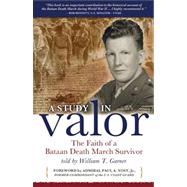
| Foreword | p. xi |
| Preface | p. xiii |
| Introduction | p. xvil |
| The Early Years | p. 1 |
| Into the Army | p. 5 |
| Hamilton Field | p. 11 |
| Overseas | p. 23 |
| War | p. 31 |
| Surrender | p. 47 |
| The March of Death | p. 59 |
| Camp O'Donnell | p. 73 |
| Cabanatuan | p. 81 |
| The "Hell Ships" | p. 99 |
| Japan | p. 111 |
| Letters and Flags | p. 117 |
| Parachute Drops Continue | p. 135 |
| Home | p. 141 |
| A Soldier's Faith | p. 151 |
| Others Who Served | p. 159 |
| The Poetry of Prisoners | p. 165 |
| Internet URL References | p. 195 |
| Author Biography | p. 197 |
| Table of Contents provided by Ingram. All Rights Reserved. |
The New copy of this book will include any supplemental materials advertised. Please check the title of the book to determine if it should include any access cards, study guides, lab manuals, CDs, etc.
The Used, Rental and eBook copies of this book are not guaranteed to include any supplemental materials. Typically, only the book itself is included. This is true even if the title states it includes any access cards, study guides, lab manuals, CDs, etc.
The men were not told their destination or how far or how long they were to march. They received little or no food or water. Some were too ill to march at all. Prisoners too weak to continue frequently fell out of the march. The stronger were usually not permitted to help the weaker, although many tried. Most of those who could not keep up were bayoneted, shot, or beheaded. Some were disemboweled or thrown under the moving wheels of Japanese trucks and equipment. . . .
The weakened prisoners were subjected to a form of torture that some have called the "sun treatment," from which those without caps or helmets suffered the most. . . . Even during the march, guards would sometimes remove the hat or helmet of a marcher. Each midday, while the tropical sun was blazing, the prisoners were required to stand or sit in direct sunlight for several hours. Their guards sat in the shade.>p>
Even if a prison needed to relieve himself between ordered stops, he had to keep moving. This meant, of course, that many were required to urinate or defecate in their clothing, compounding the difficulty of marching. There was no consideration for personal hygiene.
The men were not permitted to have water, although often there was fresh water close by and easily accessible. Many men went out of their heads. The Japanese soldiers sometimes dragged out those who were delirious and buried them alive. Worse, they sometimes held rifles to the heads of other prisoners and forced them, under threat of death, to bury their delirious but fully conscious comrades. . . .
Clarence entertained thoughts of escape and even discussed it quietly with some of the other prisoners. He was told that some men had tried, and although most were killed, a few had made it. Even in their poor condition, it seemed to him that a hundred prisoners could overpower a handful of armed guards. Of course, they would have to consider where they would go and whom they could trust if they managed to break free. Clarence and other men who had been in the Philippines for only a few months were unfamiliar with the country except for the immediate areas in which they had served.